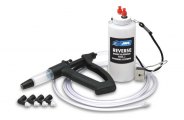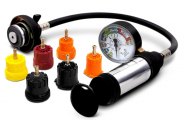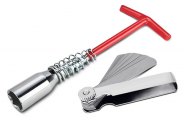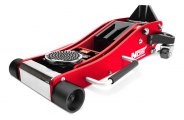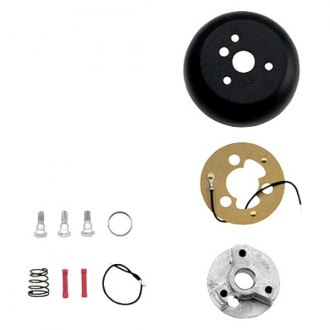GEO Accessories & Parts

GEO Parts
GEO Wheels & Tires
GEO Exterior Accessories
 Custom Grilles
Custom Grilles Chrome Trim
Chrome Trim Body Kits
Body Kits Towing & Hitches
Towing & Hitches Headlights
Headlights Tail Lights
Tail Lights Tonneau Covers
Tonneau Covers Wind Deflectors
Wind Deflectors Roof Racks
Roof Racks Car Covers
Car Covers Mirrors
Mirrors Bug Deflectors
Bug Deflectors Car Bras
Car Bras Light Covers
Light Covers Bike Racks
Bike Racks Wiper Blades
Wiper Blades Mud Flaps
Mud Flaps Car Tents
Car Tents Soft Tops & Hard Tops
Soft Tops & Hard Tops Running Boards
Running Boards Off-Road Bumpers
Off-Road Bumpers Spoilers
Spoilers Custom Hoods
Custom Hoods Fender Flares
Fender Flares License Plates & Frames
License Plates & Frames Winches
Winches Emblems & Logos
Emblems & Logos Sunroof Visors
Sunroof Visors Armor & Protection
Armor & Protection Car Wraps
Car Wraps Spare Tire Covers & Carriers
Spare Tire Covers & Carriers Snow Plows
Snow Plows Custom Horns
Custom Horns Auto Detailing
Auto Detailing
GEO Automotive Lighting
GEO Body Parts
GEO Interior Accessories
GEO Audio & Electronics
 Installation Parts
Installation Parts Antennas & Components
Antennas & Components Stereos
Stereos Speakers
Speakers Amplifiers
Amplifiers Subwoofers
Subwoofers Cameras & Driver Safety
Cameras & Driver Safety Alarms & Remote Start
Alarms & Remote Start CB Radios & Components
CB Radios & Components iPhone & Android Integration
iPhone & Android Integration Bluetooth
Bluetooth Equalizers & Processors
Equalizers & Processors Batteries & Power
Batteries & Power Video
Video Radar Detectors
Radar Detectors GPS Systems
GPS Systems Mounts & Chargers
Mounts & Chargers Action Cameras & Accessories
Action Cameras & Accessories
GEO Automotive Tools
 Oil Change Tools
Oil Change Tools Engine Service Tools
Engine Service Tools Brake Service Tools
Brake Service Tools Suspension & Steering Service Tools
Suspension & Steering Service Tools Pullers & Installers
Pullers & Installers Cooling System Service Tools
Cooling System Service Tools Diagnostic & Testing Tools
Diagnostic & Testing Tools Lockout Kits
Lockout Kits Repair Manuals
Repair Manuals Spark Plug & Ignition Tools
Spark Plug & Ignition Tools Wheel & Tire Service Tools
Wheel & Tire Service Tools Fuel System Service
Fuel System Service Transmission & Drivetrain Service Tools
Transmission & Drivetrain Service Tools A/C Tools & Equipment
A/C Tools & Equipment Electrical System Tools
Electrical System Tools Exhaust System Service Tools
Exhaust System Service Tools Auto Glass Tools
Auto Glass Tools Jacks
Jacks Automotive Lifts & Stands
Automotive Lifts & Stands Automotive Paint
Automotive Paint EV Charging
EV Charging Battery Chargers & Jump Starters
Battery Chargers & Jump Starters Dollies & Movers
Dollies & Movers Creepers
Creepers Auto Detailing
Auto Detailing Key Cutting Machines
Key Cutting Machines Dent Repair Tools
Dent Repair Tools Service Carts
Service Carts Vehicle & Parts Protection
Vehicle & Parts Protection
In the 1980s American cars were perceived to be of inferior quality, with fuel efficiency, styling and performance that was substandard to imports. The sudden spikes in fuel prices, stricter emissions standards, and changing consumer tastes that began in the previous decade caught Detroit napping, and the stopgap engineering and poorly executed cars that ensued drove customers away. Today American made cars and trucks are equal or superior to vehicles made anywhere in the world, but it required some time to reach this standard, and at least for a while domestic manufacturers took the “if you can’t beat them, join them approach” and sold their own imports. Mitsubishi built many economy and performance models that were sold as Chryslers, Plymouths and Dodges, and Mazda’s small car expertise was used to design the Escort and Probe for Ford Motor Company. Ford also created the Merkur line of captive imports manufactured by Ford of Europe to compete with performance sedans produced by Audi, BMW, Mercedes, and Volvo. And in 1989, General Motors created the Geo brand to market its own rebadged imports.
With Geo, GM sought to capitalize on the buying public’s infatuation with imported cars, and even used phrases like “import inspired” in its Geo advertising. Geos were sold through Chevrolet dealers, and while Geo signs and separate floor space were required, many dealers created entire showrooms that were distinct from the Chevrolet part of the business. Market research had shown that a substantial percentage of import buyers never considered an American make and had never been in a domestic dealership. By selling cars under a different brand but through an established dealer network, GM hoped to reach prospective import buyers while utilizing existing resources. The inaugural 1989 Geo range consisted of the Geo Metro and Geo Spectrum subcompacts, the compact Prizm, and the compact SUV Geo Tracker. The Spectrum was dropped the following year when the sport compact Geo Storm was added to the line.
The first design Geo Metro was based on the Suzuki Cultus, which was marketed in North America as the Suzuki Swift, and sold at Chevrolet dealers from 1985-1988 as the Chevrolet Sprint. In 1989 the car was built by Suzuki in Japan, but thereafter it was manufactured in Ontario, Canada at GM and Suzuki’s jointly owned CAMI (Canadian Automotive Manufacturing, Inc.) Automotive plant. Powered by a 1.0L 3-cylinder engine that delivered 55 hp through a 5-speed manual transaxle, the front-wheel drive Metro was available as a 3-door and 5-door hatchback, and in Canada as a 4-door sedan. The 53 mpg Metro enabled GM to boast that it sold the most fuel efficient vehicle in the U.S. In 1990 a 3-speed automatic transaxle became standard in the Geo LSi, and a convertible model was offered from 1990-1993. In 1995 the Metro was redesigned, and featured a more rounded, aerodynamic body that came in 3-door hatchback and 4-door sedan versions on a longer 93.1” wheelbase. In addition to the 1.0L 3-cylinder, a 70 hp 1.3L in-line 4-cylinder engine was also offered.
Based on the Isuzu I-Mark, the one year only Geo Spectrum had been sold from 1985-1988 as the Chevrolet Spectrum. It was replaced in 1990 by the Geo Storm, which was based on another Isuzu model, the Impulse. With its sleek fastback styling and available 130 hp 1.6L DOHC 4-cylinder engine, the Storm injected performance into the Geo lineup. In addition to the fastback’s 3-door hatchback body style, the Storm was also available as a 2-door wagon in 1991 and 1992. The base model came with a 95 hp SOHC 1.6L engine, while the more powerful DOHC engine was standard on the GSi, along with other equipment including a spoiler, driving lights, rear anti-sway bar, and a manual transmission geared for better acceleration. In 1992 the Storm had a minor front-end facelift that eliminated the pop-up headlight covers, and the GSi was given a 10 horsepower boost from a larger 1.8L engine. The Storm was discontinued in 1993 when Isuzu cancelled the Impulse.
Like its 1985-1988 Chevrolet Nova predecessor, the Geo Prizm was a product of the GM and Toyota NUMMI (New United Motor Manufacturing, Inc.) joint manufacturing effort. Based on the Japanese market Toyota Sprinter, the Prizm was a virtual clone of the Toyota Corolla, and was built on the same assembly line. The first generation Prizm was available as a 4-door sedan, and through 1991 as a 5-door hatchback, in base and upscale LSi trim levels. It was powered by a 1.6L 4-cylinder engine that transferred its 102 hp through a 5-speed manual or 3-speed automatic transaxle. From 1990 to 1992 a sporty GSi version was offered equipped with a 130 hp DOHC engine and sport suspension. An extensive redesign in 1993 gave the Prizm a less angular shape with more interior room. New options for the LSi trim level included a more powerful 1.8L engine, 4-speed automatic transaxle, and leather seats.
Like its Suzuki Sidekick counterpart, the Geo Tracker was offered as a low cost alternative to the Jeep. Both vehicles were developed by CAMI, GM and Suzuki’s joint Ontario, Canada manufacturing venture, although delays forced all 1989 and some 1990 vehicles to be assembled in Japan. Initially all Trackers were 4WD and powered by an 80 hp 1.6L SOHC engine. Trim levels consisted of a base model in convertible or 2-door hardtop, and an upscale LSi hardtop equipped with 3-speed automatic transmission, specially upholstered seats, tinted glass, A/C, chrome wheels, and spare tire cover. The LSi trim became available on convertibles in 1990, and in 1992 a 2WD convertible was offered. In 1996, the 2-door hardtop was replaced by a 4-door model, which also had a more powerful 16-valve 96 hp engine.
Initial Geo sales exceeded GM’s projections, but an economic recession in the early 90s and ever changing consumer tastes caused sales to decline through the rest of the decade. By 1996 many of the small cars that Geo had been created to compete with were much larger and more powerful, and consumers, less concerned with fuel efficiency, wanted them as well as GM’s trucks and SUVs. GM and their Japanese partners were no longer interested in continuing the venture and GM announced the end of the brand that December. The Metro, Prizm, and Tracker were sold through Chevrolet dealers until each model went out of production.
All Geo models, and their Chevrolet predecessors and successors, could be depended upon to provide economical and reliable transportation and an enjoyable driving experience. And no matter whether your Geo of choice is a thrifty Metro or Prizm for commuting, a sporty Storm for spirited driving, or a rugged Tracker for tackling the trails, we have the parts and supplies you need for regular maintenance and timely repair jobs, as well as accessories for upgrading performance and appearance.
Dress your vehicle up. Keep it running at its peak or unleash its hidden power. Make it look like it just rolled off the show room floor. Take care of it and maintain it. You name it, we've got it. We have gathered everything you need to make your GEO perfect both inside and out. CARiD's job is to meet your every expectation and provide you with quality and durable accessories and parts designed with excellence in mind. Whether you're after luxurious style, brisk performance, or anything in between, our wide assortment covers all the bases.

